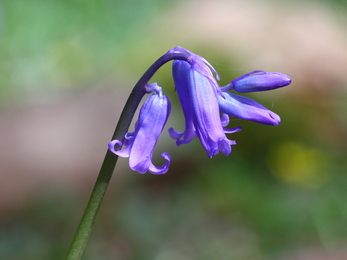As the daylight hours and warmth increases, spring flora are one of the first to appear including celandines, primroses, and bluebells. Many of these species we see are special to woodlands. They have adapted to flower early before the leaves on the trees develop and block out the sunshine to the ground floor below.
If you take a more careful look, you can spot some rarer plants such as early purple orchids, or the beautiful moschatel. Moschatel is also called ‘town hall clock’ because its four flowers face out at 90 degrees from one another thus resembling a town hall clock. Other specialist species such as toothwort are a parasitic plant. Toothworts have a strange flowering spike and are ghostly pail due to the lack of any chlorophyll. The plant survives by tapping into the roots of trees, such as hazel and field maple, and then taking the nutrients it needs.






